Physical Address
304 North Cardinal St.
Dorchester Center, MA 02124
An incompetent mitral valve allowing regurgitant flow from the left ventricle (LV) into the left atrium (LA) during systole (mid-to-late systolic murmur) ▸ maintaining an adequate stroke volume requires an increased ventricular stroke volume and ejection fraction
Acute regurgitation (e.g. ruptured chordae tendineae): sudden volume loading with acute pulmonary oedema/heart failure
Chronic regurgitation (e.g. hypertrophic cardiomyopathy): volume overload with dilated left cardiac chambers ± cardiac failure
CXR Selective left atrial enlargement may be absent, slight or moderate (the left atrial appendage is usually not enlarged)
Acute severe non-rheumatic disease: a normal heart size ▸ pulmonary oedema
Later stages: compensatory left ventricular dilatation
Echocardiography It can assess coaptation of the valve leaflets and any regurgitant jet direction (with Doppler assessment)
CMR mitral regurgitation seen as a retrograde jet through the mitral orifice secondary to turbulent flow and spin dephasing ▸ CMR can also quantify the degree of regurgitant flow (e.g. phase contrast velocity flow mapping)
Mitral valve prolapse: systolic bowing of the mitral leaflet >2 mm beyond the annular plane into the atrium (due to rupture or elongation of the chordae tendineae) ▸ most common cause of non-ischaemic mitral regurgitation
Chordal rupture: following bacterial endocarditis or MI leading to eversion of the valve leaflet into the atrium during systole and preventing full closure
Functional mitral regurgitation: occurs in dilated cardiomyopathy or ischaemic failure, with a normal valve
Mitral annulus calcification : this rarely occurs before 70 years of age (F>M) ▸ it is seen with hypercalcaemic states (e.g. end-stage renal disease) ▸ it may lead to mild mitral regurgitation (but rarely stenosis) ▸ there is a possible increased risk of infective endocarditis ▸ it is also associated with transient ischaemic attacks (due to emboli)
CXR it is seen as a C-shaped open ring (the gap occurs where the anterior mitral valve leaflet base is in contact with the posterior aortic valve ring)
Dystrophic calcification of the mitral valve: unlike mitral annulus calcification this is very suggestive of a rheumatic aetiology
This is usually due to chronic rheumatic fever (leading to leaflet thickening/nodularity/commissural fusion)
The most common result is a mixture of stenosis and regurgitation (both cannot be severe at the same time)
Mild stenosis: mitral area >1.5 cm 2 ▸ mean gradient <5 mmHg
Moderate stenosis: 1–1.5 cm 2 ▸ mean gradient 5–10 mmHg
Severe stenosis: <1 cm 2 ▸ mean gradient >10 mmHg
It is usually asymptomatic until a critical stenosis develops (e.g. following an attack of rheumatic fever)
Atrial fibrillation (due to atrial dilatation) ▸ dyspnoea (pulmonary venous hypertension) ▸ sequelae of atrial thrombus embolization ▸ secondary pulmonary arterial hypertension
CXR
Left atrial enlargement : the left atrial appendage is particularly affected (suggesting a rheumatic aetiology) ▸ simple straightening of the left heart border to a large bulge at the appendage ▸ a grossly dilated left atrium can enlarge to the right and also posteriorly (causing oesophageal displacement and dysphagia)
A ‘double density’ behind the heart
Widening of the subcarinal angle
Left ventricular enlargement is not a feature (cf. mitral regurgitation)
Parenchymal lung changes of haemosiderosis and intrapulmonary ossification: these may appear after several years of pulmonary venous congestion
Curvilinear calcification: this may occur within the left atrial wall or within the clot lining the wall
Echocardiography Standard for diagnosis ▸ evaluates mitral valve morphology and valve mobility
CMR Can show restricted mitral valve opening ▸ thickened leaflets ▸ commissural fusion ▸ antegrade jet due to turbulent flow across a stenotic valve ▸ ‘fish mouth’ appearance on short axis images ▸ ‘hockey stick’ appearance due to bowing of a thickened/fibrotic anterior leaflet during diastole ▸ can directly measure the orifice area ▸ mitral valve area can be calculated via mitral flow velocity analysis
Congenital mitral stenosis is rare
Treatment: valve replacement or valvuloplasty for severe stenosis
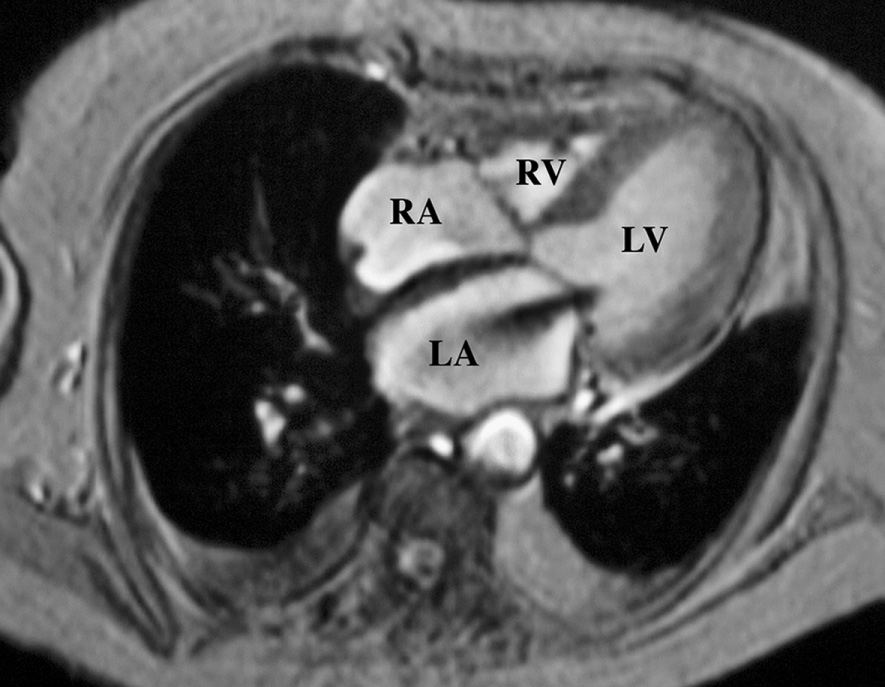
| Valve abnormalities | Supporting structure abnormalities |
|---|---|
| Acute rheumatic mitral valve disease | Chordal rupture (e.g. post MI) |
| Mitral valve prolapse | Papillary muscle rupture dysfunction |
| Bacterial endocarditis | Functional mitral regurgitation |
| Prosthetic valve leaks | Mitral annular calcification |
| Connective tissue diseases (e.g. SLE/RA) | Atrial myxoma |
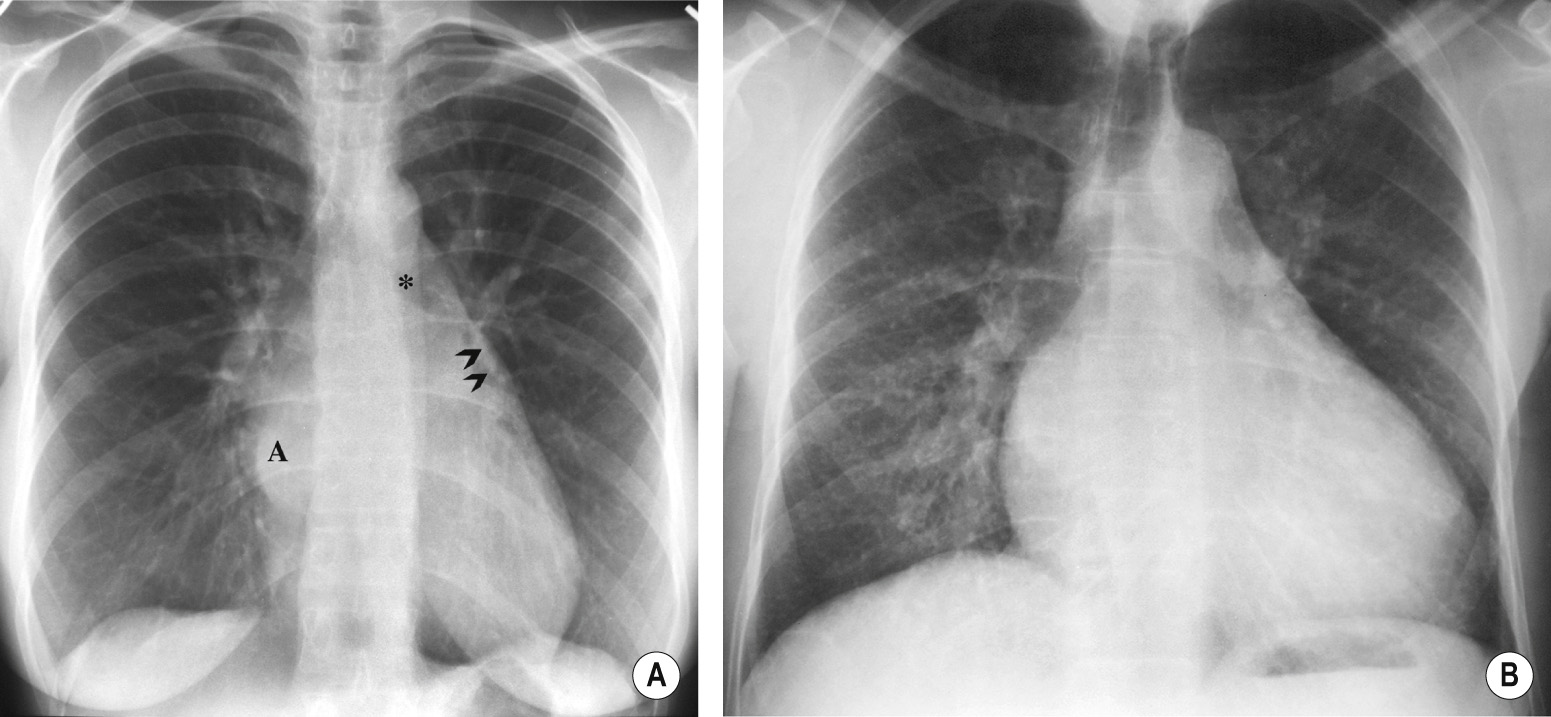
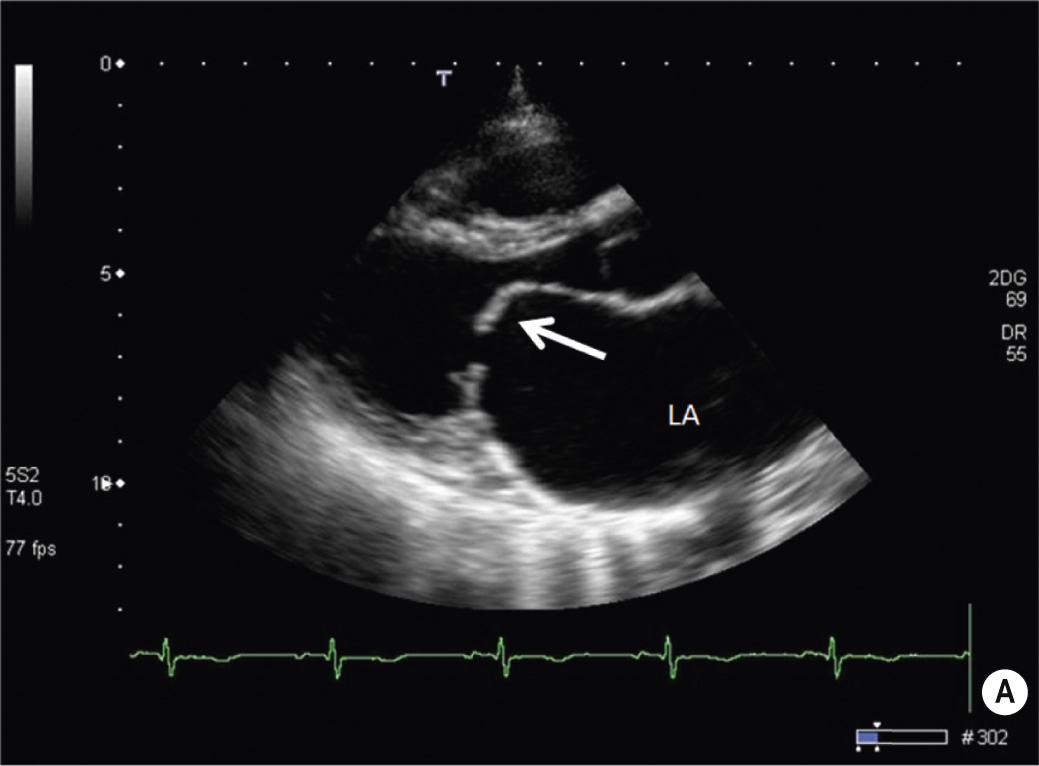
This may result from aortic valve cusp or aortic wall disease
Acute aortic regurgitation: causes include bacterial endocarditis or rarely occurring after trauma or aortic dissection (with acute avulsion of a leaflet into the left ventricle) ▸ it develops rapidly with increasing left ventricular end-diastolic pressure and acute heart failure
Chronic aortic regurgitation: congenital deformities (e.g. bicuspid aortic valve or Marfan's syndrome) ▸ rheumatic heart disease ▸ syphilitic aortitis ▸ ankylosing spondylitis ▸ a descending aortic aneurysm
A normal heart size or minor left ventricular enlargement depending on the speed of onset ▸ pulmonary oedema with left heart failure (an important cause of pulmonary oedema with a normal-sized heart) ▸ an unremarkable aorta (unless there is associated aortic disease causing dilatation – e.g. Marfan's syndrome)
The technique of choice for displaying aortic vegetations, cusp perforation or aortic root abscesses ▸ regurgitant flow is seen with Doppler imaging
This allows for detection of any aortic regurgitation as well as assessing the aortic valve morphology
There may be severe left ventricular enlargement (paralleling the disease severity) ▸ moderate thoracic aortic enlargement (or severe enlargement with aortitis or chronic dissection) ▸ there is infrequent valve calcification ▸ if mitral valve disease is also present then left atrial enlargement may dominate the picture
Precise assessment of regurgitant volume can be estimated from the degree of signal loss ▸ it also allows assessment of the LV function (ECG-gated cardiac CT is an alternative if MRI is contraindicated)
Chronic disease: this allows the left ventricle to dilate with an increased compliance ▸ end-diastolic pressures remain low and the patient remains asymptomatic until heart failure develops ▸ once failure develops the prognosis is markedly worsened
Acute disease: ventricular compliance cannot compensate ▸ it is associated with a very large rise in ventricular end-diastolic pressures (limiting regurgitant flow)

Stenosis with a valve area < 1.0 cm 2 is severe ▸ stenosis can be:
Supravalvular: a rare lesion associated with Williams–Beuren syndrome (genetic disorder of elastin which is responsible for aortic recoil) – characteristic hourglass aortic narrowing (or diffuse tubular narrowing of the ascending aorta in 30%)
Valvular:
Calcific aortic stenosis : this is most commonly due to degenerative calcium deposition on normal aortic cusps (cf. mitral stenosis where calcium is deposited on an already stenosed valve) ▸ it was previously commonly due to calcification of a congenitally deformed bicuspid valve
Rheumatic aortic stenosis : this causes inflammatory fusion of the commissures of the aortic valve cusps and is often associated with aortic regurgitation and mitral valve involvement ▸ associated with pronounced dyspnoea due to the associated mitral valve disease
Subvalvular (least common): commonly caused by hypertrophic cardiomyopathy
can be normal with significant disease
Rounding of the cardiac apex (suggesting left ventricular hypertrophy – however there is usually cardiac dilatation which may be marked with aortic regurgitation)
Localized prominence of the ascending aorta (representing post-stenotic dilatation) ▸ in older patients the whole thoracic aorta may be dilated from atherosclerosis
Aortic valve calcification (the extent of calcification is only loosely related to the stenotic severity)
Thickened echogenic valve leaflets with reduced mobility
Aortic valve leaflet and aortic root calcification is well shown ▸ ultrafast CT can assess the severity of aortic stenosis by imaging the valve opening
Calcified valves appear as a signal void
It can demonstrate impaired aortic valve opening (and degree of stenosis), the valve morphology and any left ventricular function (± hypertrophy)
Systolic flow dephasing within the aortic root has a loose relationship to the severity of the stenosis
Diastolic flow dephasing within the left ventricular outflow tract can assess any associated aortic regurgitation
Phase-contrast systolic gradient echo sequences compare favourably with US
The appearances are commonly dominated by any associated mitral valve disease ▸ post stenotic dilatation is rare; gross valvular calcification is rare
There is a frequent association with coronary artery disease – coronary angiography is therefore necessary prior to valve replacement surgery

Usually functional and secondary to: rheumatic disease (less commonly causing stenosis) ▸ endocarditis (often as a complication of IV drug abuse) ▸ pulmonary hypertension (caused by the associated dilated right ventricle) ▸ previous mitral valve replacement ▸ Ebstein's anomaly ▸ endomyocardial fibrosis
High venous pressures with a big ‘v’-wave and a pulsating enlarged liver
An enlarged right atrium (with an increased curvature of the right heart border)
This appearance has a single margin unlike the ‘double heart border’ seen with left atrial enlargement (as the IVC limits right atrial expansion)
The definitive method of investigation ▸ a low pressure drop across the valve is seen with severe disease ▸ easily detects retrograde flow in the right atrium
Regurgitant velocities may be so low that they do not cause aliasing and therefore may not immediately be recognized
Rheumatic tricuspid valve calcification is almost unknown
Metastatic carcinoid can produce toxic metabolites causing deformity and regurgitation of the tricuspid and pulmonary valves
Rheumatic heart disease (usually) ▸ carcinoid syndrome ▸ tumours (especially right atrial myxoma) ▸ endocarditis
It can result in right atrial and right ventricular enlargement
Non-specific cardiac enlargement ▸ there may be dilatation of the superior and inferior vena cava
In rheumatic heart disease the features of mitral stenosis predominate (left atrial enlargement and pulmonary arterial enlargement)
Tricuspid valve calcification may be seen (dystrophic degeneration from ageing as well as chronic severe right ventricular hypertension)
Thickened valve leaflets with limited motion ▸ Doppler can measure any jet present
Congenital causes include Ebstein's anomaly or isolated tricuspid stenosis (very rare)
Usually associated with tricuspid regurgitation and mitral stenosis
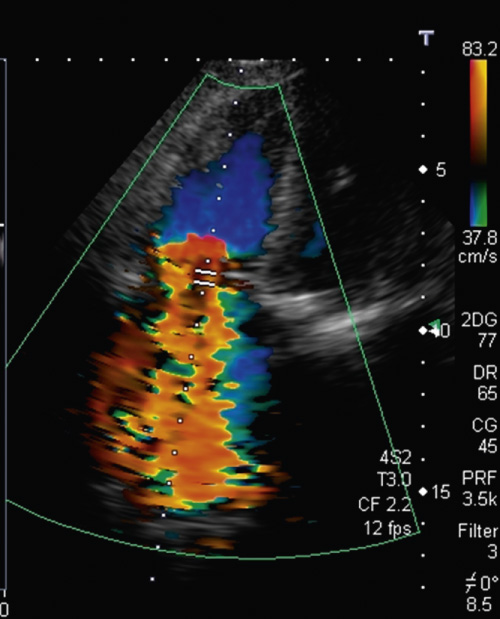
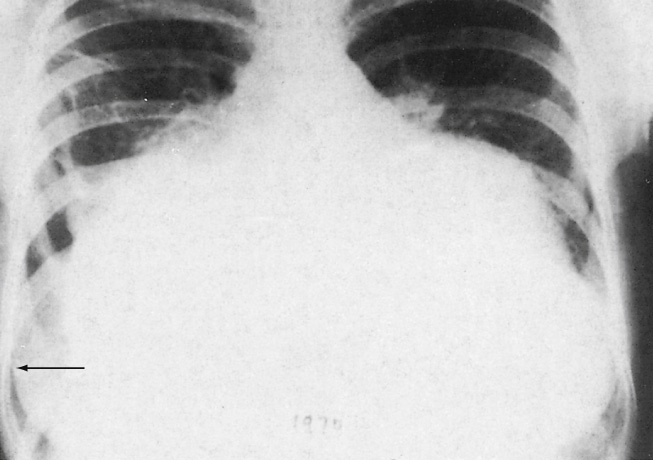
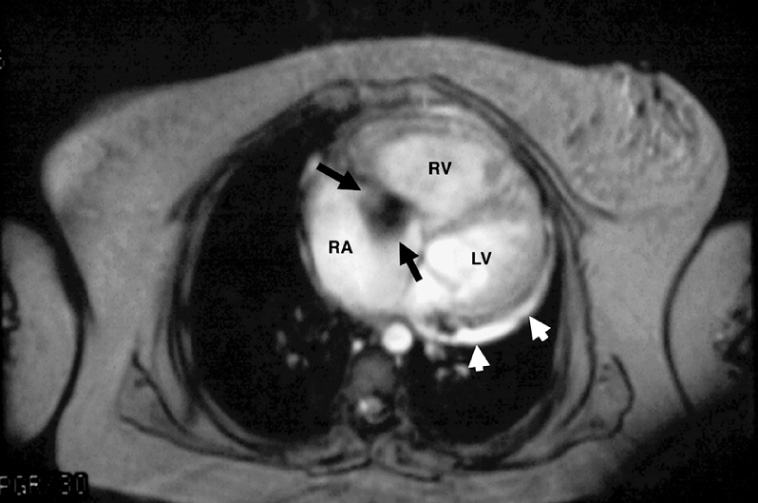
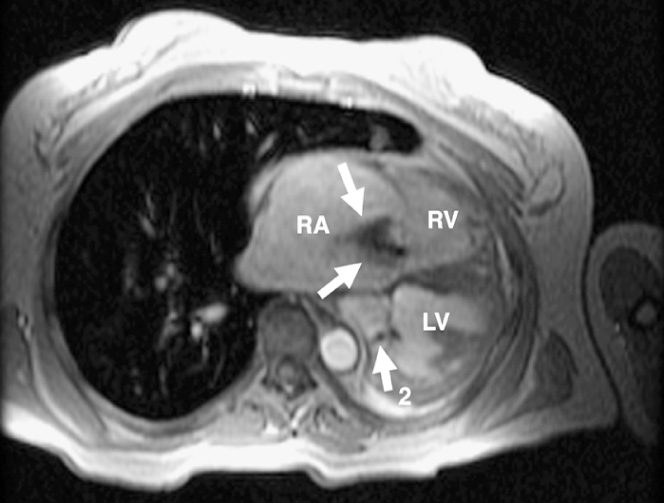
Become a Clinical Tree membership for Full access and enjoy Unlimited articles
If you are a member. Log in here